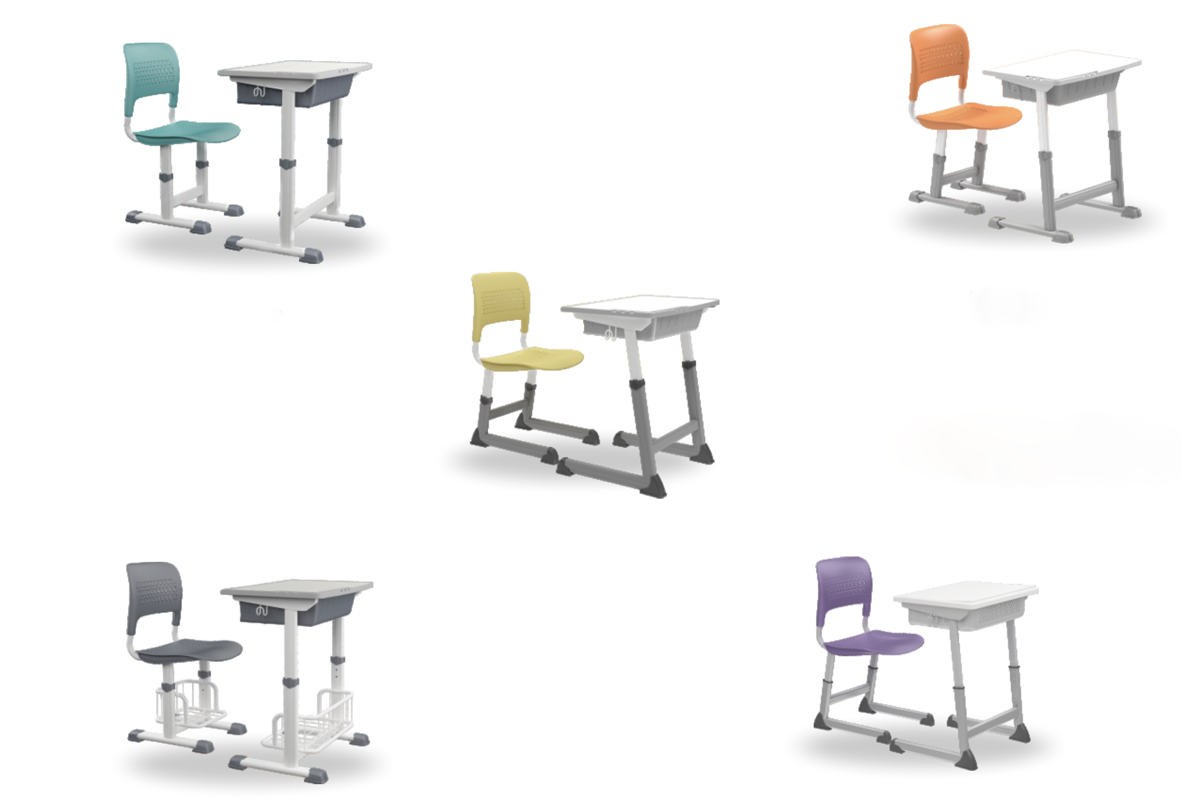The colors of classroom furniture aren’t just about aesthetics—they shape moods, influence focus, and even impact how students interact with their environment. Whether you’re redesigning a preschool play area or outfitting a high school science lab, selecting the right hues for desks and chairs can transform a sterile space into a dynamic hub for learning. Here’s how to make smart, intentional color choices that support students’ needs.
- Understand the Psychology of Color Colors evoke emotions and behaviors, making them a silent partner in education. Here’s a quick guide to what different shades communicate:
Blue: Calming and focused. Ideal for areas requiring concentration (e.g., study nooks or exam rooms).
Green: Refreshing and balanced. Perfect for reducing eye strain in tech-heavy classrooms.
Yellow: Energizing and creative. Great for sparking enthusiasm in art rooms or collaborative zones.
Red: Stimulating and bold. Use sparingly—think accents for activity areas (e.g., gyms or makerspaces).
Neutrals (White, Gray, Beige): Clean and flexible. A neutral base lets colorful student work or decor take center stage.
Pro Tip: Avoid overwhelming students with overly bright or clashing palettes. Balance bold shades with softer tones to create harmony.
- Consider Age-Appropriate Choices A kindergarten classroom and a college lecture hall have vastly different needs. Tailor colors to your students’ developmental stages:
Early Childhood (Ages 3–8): Young learners thrive in vibrant, playful environments. Think warm yellows for energy, soft greens for calm, and primary-color accents to stimulate curiosity. Avoid dull grays—opt for furniture that feels inviting (e.g., rainbow-colored chairs or pastel desks).
Elementary/Middle School (Ages 9–14): Balance fun with function. Incorporate energizing oranges or blues in group workspaces, but use muted tones (like sage or navy) for individual student desks. This age group benefits from zones that differentiate activities (e.g., a red reading corner vs. a green STEM lab).
High School & Beyond (Ages 15+): Older students need environments that promote focus and professionalism. Neutral desks paired with accent chairs in university-branded colors (e.g., burgundy or navy) strike a mature yet engaging tone.
- Match Colors to Classroom Goals What’s the primary purpose of the space? Align furniture colors with the room’s function:
Collaborative Classrooms: Warm tones like orange or coral encourage interaction and creativity. Use modular desks in these hues to define group workspaces.
Quiet Study Zones: Cool blues or greens promote calm and concentration. Pair neutral desks with student chairs in softer shades to minimize distractions.
STEM Labs or Tech Rooms: Sleek metallics (silver, charcoal) or high-contrast black-and-white schemes create a modern, innovative vibe.
Art & Music Rooms: Go bold! Bright reds, purples, or multicolor furniture can inspire artistic expression.
- Factor in Practicality Durability and maintenance matter. A preschool’s cherry-red chairs might look cheerful, but they’ll show stains faster than a navy-blue counterpart. Keep these in mind:
Darker Colors: Hide scuffs and spills better—ideal for high-traffic areas.
Matte Finishes: Reduce glare from classroom lighting, which can cause eye fatigue.
Eco-Friendly Materials: Choose non-toxic, low-VOC paints (especially for younger kids prone to touching surfaces).
Case in Point: A middle school in Oregon opted for charcoal-gray desks with colorful, replaceable chair cushions. The result? Easy upkeep + pops of student personality.
- Test Before Committing Lighting dramatically alters how colors appear. A teal desk might look vibrant under natural light but dull under fluorescents.
Sample Swatches: Paint small sections of furniture or test chair fabrics in the actual classroom. Observe them at different times of day.
Student Feedback: For older grades, involve students in color voting—it fosters ownership and ensures the palette resonates with them.
- Tie Colors to School Identity Incorporate your institution’s branding subtly:
Use school colors as accents (e.g., chair backs or desk edges) against neutral bases.
For a cohesive look, match furniture tones to existing walls or flooring.
Post time: Apr-01-2025








